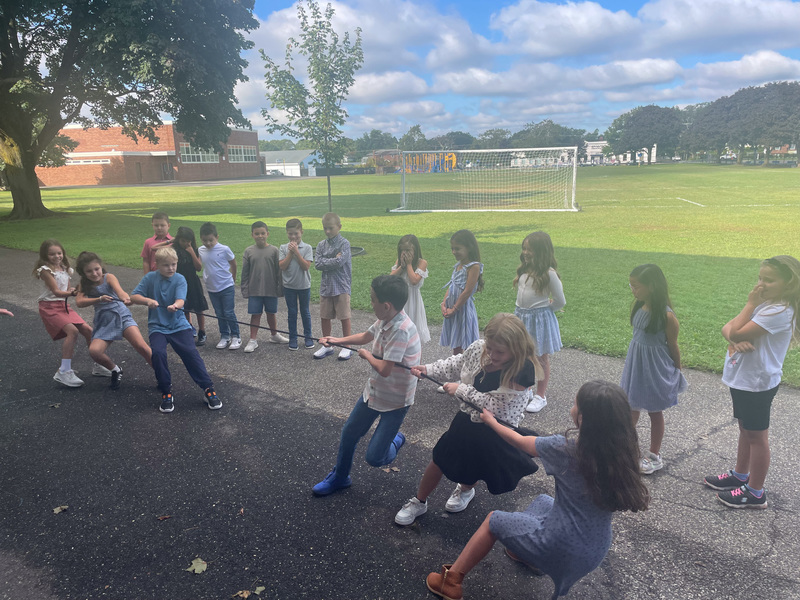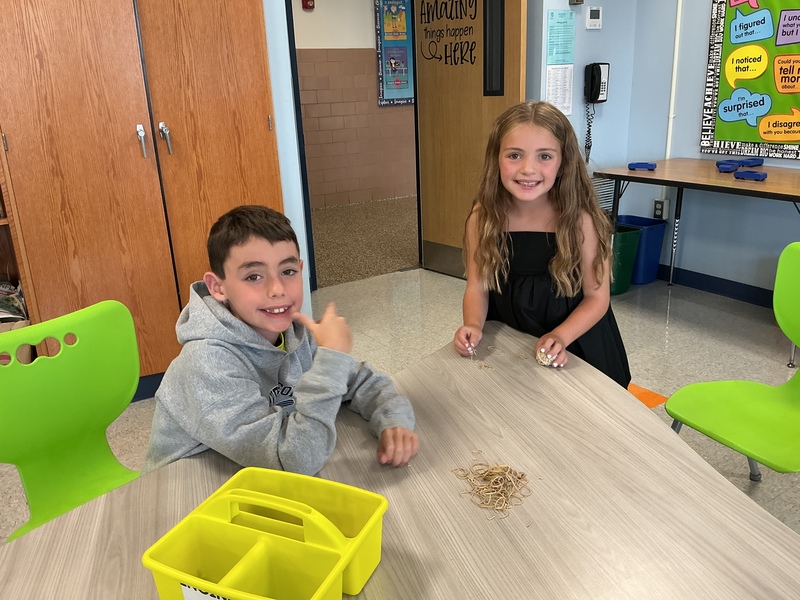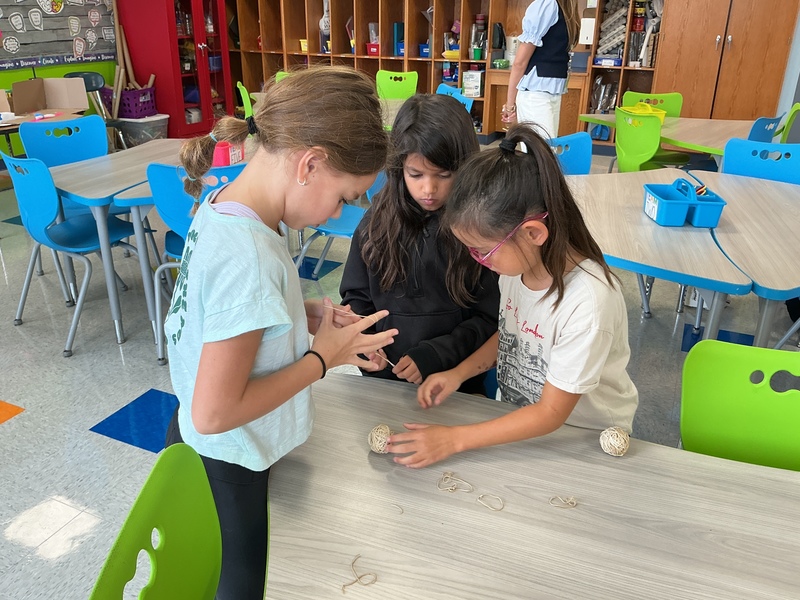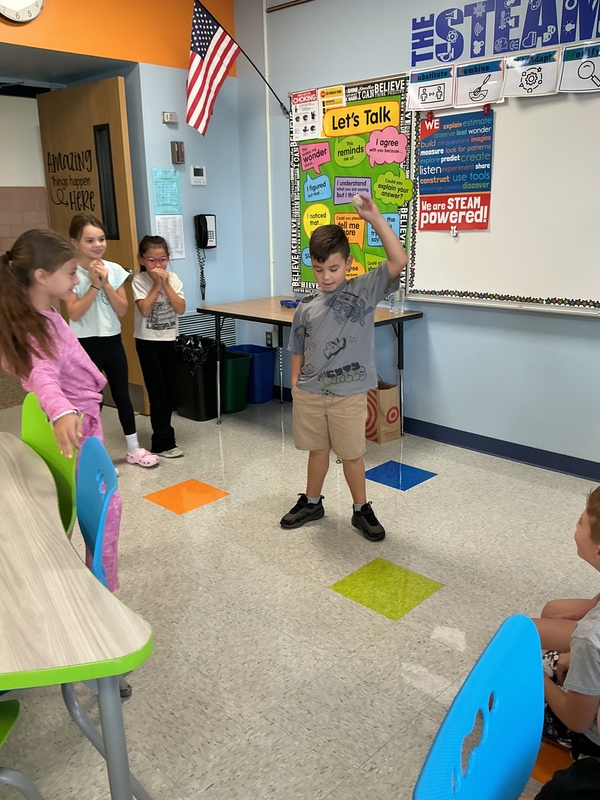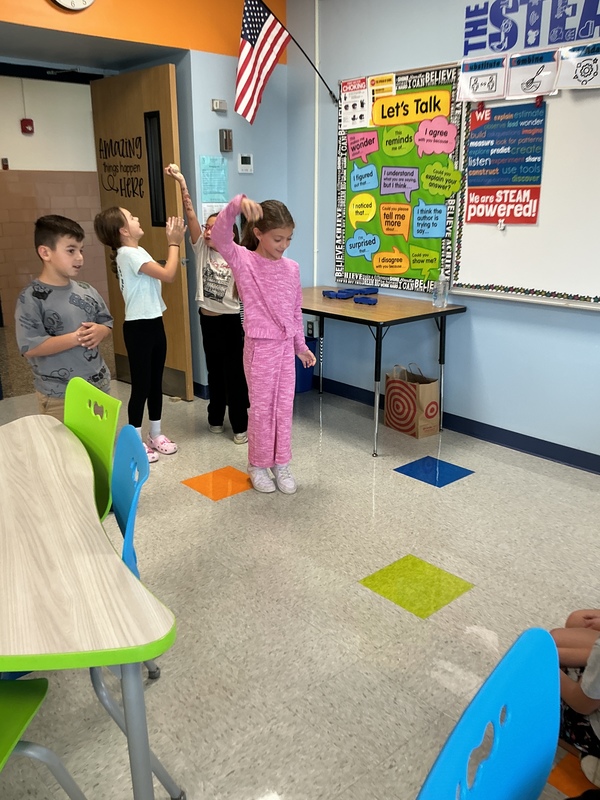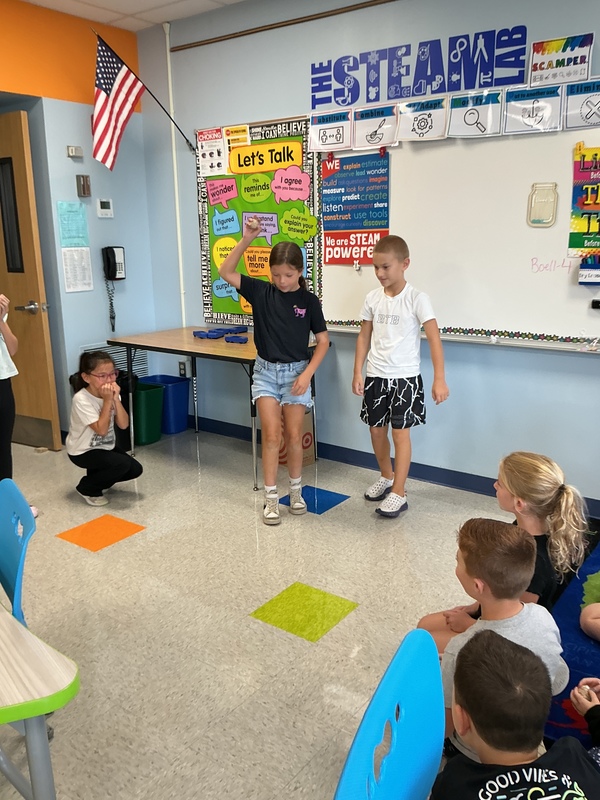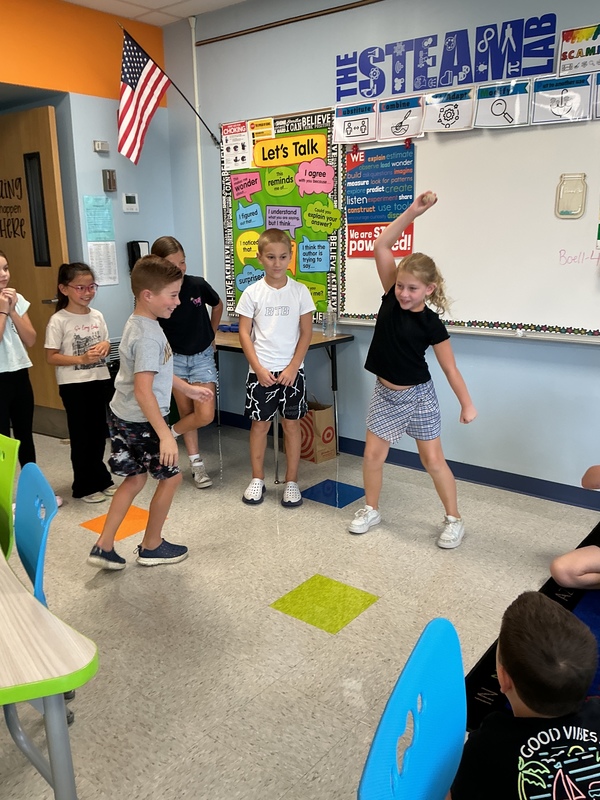In 3rd grade STEAM, students explored what makes forces balanced and unbalanced through the game of tug-o-war. Students watched videos and participated in different scenarios of tug-o-war to show examples of balanced and unbalanced forces. When two teams were matched in strength, the forces they exerted on the rope were equal and opposite. Thus, the rope and the students remained in equilibrium, because there was no net force acting on them. However, when the teams were unbalanced, the team that exerted a greater force won. The unbalanced force caused the rope to move in the direction of the stronger team, pulling the losing team with it. Students had a lot of fun investigating forces through their favorite field day game, tug-o-war.
In addition, third grade students witnessed how rubber-band forces can be used as an agent to open an 18–30-pound watermelon. When you stretch a rubber band, it stores potential energy, which is energy waiting to be released. The pressure builds up and each rubber band you place on the watermelon contracts, applying a small amount of compressive force to the rind. As you add more and more rubber bands, the collective pressure increases dramatically and eventually the rind can no longer stop the crushing force. Kinetic energy is released and the watermelon bursts open. After studying this concept, students explored how rubber band forces work by constructing their own rubber band balls. They soon realized how the more rubber bands on the aluminum ball, the greater the ball bounces.
